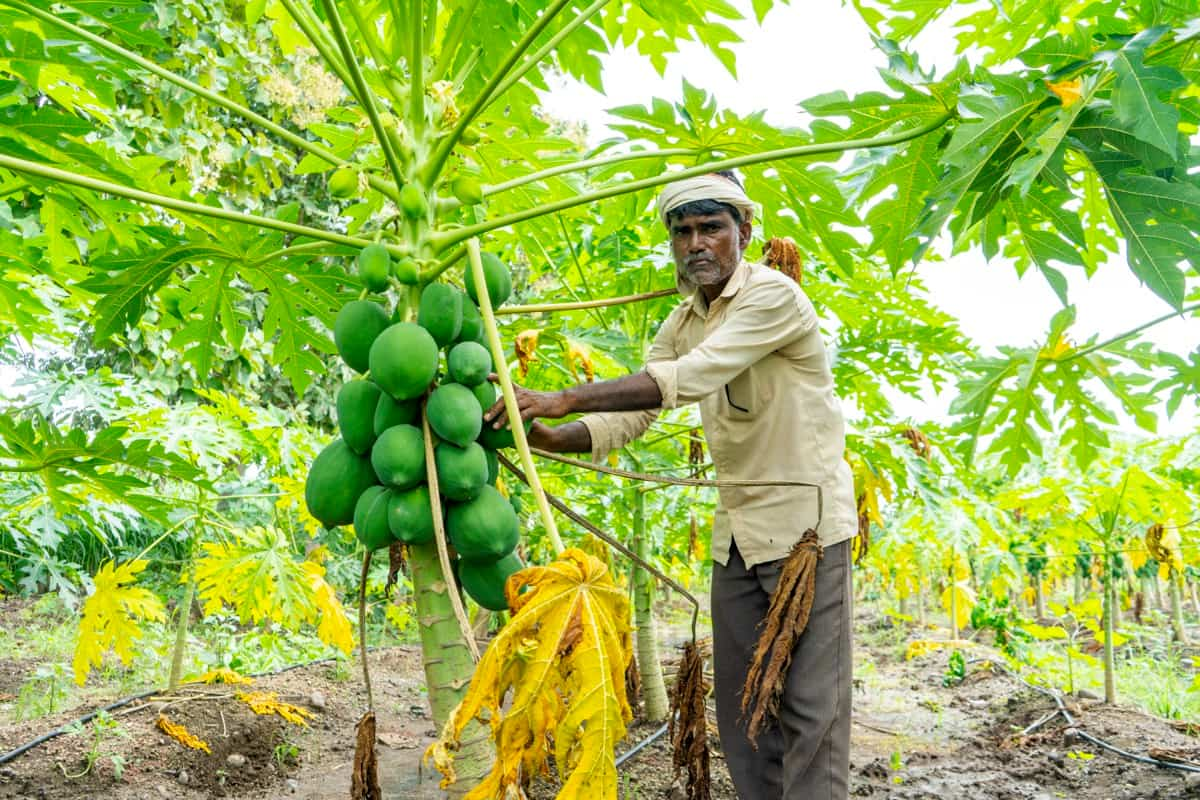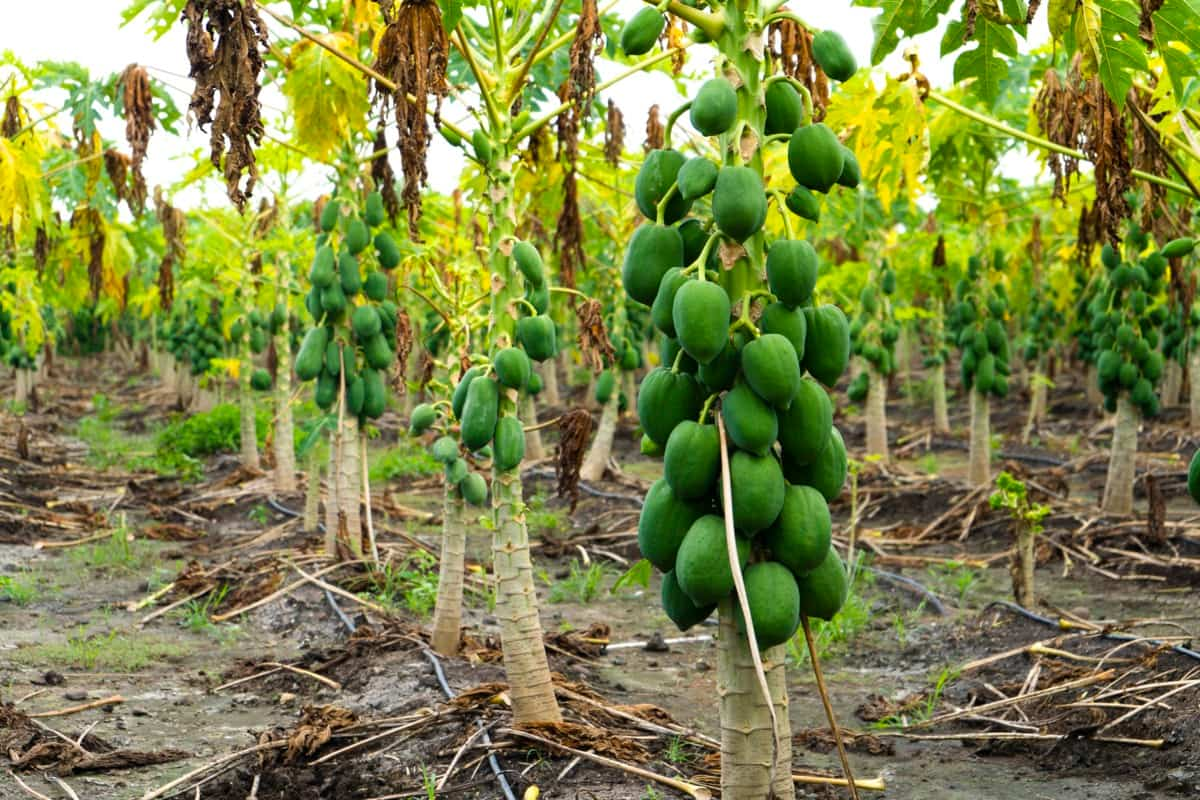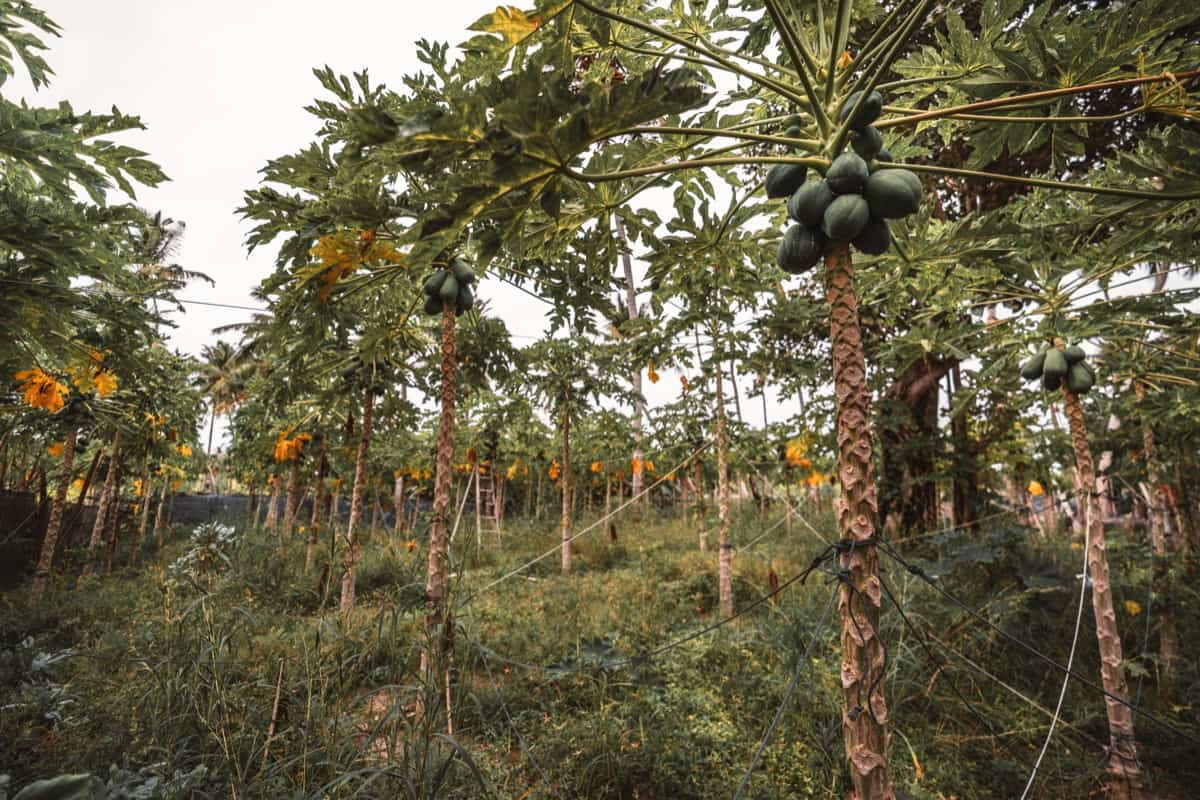The papaya tree is known for its tropical fruit and distinctive shape. If your papaya tree shows signs of stress (leaves falling off, failure to flower, etc.), it can be disheartening. You can, however, restore good health to your papaya tree by taking certain steps. You may wonder why and how to fix a papaya tree that is dying or struggling.

Poor soil nutrients, cold temperatures, high winds, lack of sunlight, and incorrect watering are the most common causes of papaya tree death. Some diseases and pest infestations can harm papaya trees. Get your papaya tree back to health with these tips to prevent it from dying and produce a delicious harvest of papayas.
7 Causes of Dying Papaya Plants
Too Cold Temperature Can Cause Papaya Trees to Die
Fruit trees of the papaya family grow in tropical and subtropical regions. Cold and freezing conditions are not suitable for them. Your papaya tree will suffer if the temperature drops below -0.5°C. A papaya tree can die from cold weather. In an ideal growing climate, papaya trees thrive between 21 and 32°C. Therefore, if your climate supports growing papaya trees, but you expect a cold snap, consider covering your tree with frost protection. Protecting young papaya trees against cold temperatures in the first few months is especially important.
Insufficient Sunlight Can Cause Papaya Trees to Die
Papaya trees can die from a lack of sunlight. It thrives in warm, sunny conditions. A papaya tree needs at least eight hours of direct sunlight daily for healthy growth and to produce flowers and delicious fruits. Make sure your papaya tree grows in a sunny spot. Ensure walls, fences, and other trees won’t shade out papaya trees while still protecting them from high winds.
Give papaya trees at least 7 ft (2 m) of space from these structures and plants to receive optimal sunlight. Planting papaya trees requires consideration of space, as space can be a barrier when it grows. In general, papaya should be planted between trees one to five meters apart and between rows three to four meters apart.
Incorrect Watering Can Cause Papaya Trees to Die
Gardeners are sometimes a bit enthusiastic about watering, so too much water can be a problem. Your papaya tree can die from root rot if it is overwatered. Depending on your climate, natural rainfall, and soil type, your papaya tree will require different amounts of water. It may be necessary to water your papaya tree four to five times a week if there is no rain. Keep your plants dry during rainy periods and water less when it’s cooler.
Watering papaya trees once established is not necessary for rainy climates. Soils that drain quickly do not hold water as long as loamy soils. Free-draining soil needs more water than soil that holds water, so you should water more frequently. Organic mulch will also help retain moisture so the soil doesn’t dry out too quickly around papaya trees. Be careful not to mulch the trunk.
Lack of Soil Nutrients For Papaya Tree
Your papaya tree will grow strong and fruit well in the right soil. They prefer free-draining soil with a pH between 4.5-8. The soil pH can be measured with this monitor. Papaya trees do not require much fertilization but will get benefit from small amounts of application throughout the year. Use homemade compost or aged manure as a top dressing between fertilization. Despite not necessarily failing, your papaya tree will struggle if it lacks soil nutrients. Nothing can grow in soil devoid of life and health. Feed your soil organic fertilizer, homemade compost, and aged manures for the best papaya tree growth.
In case you missed it: 1 Acre Papaya Cultivation Project Report: A Guide to Cost and Profit Analysis

Diseases Cause Papaya Tree Death
Papaya Ringspot Virus can affect the leaf, stem, and papaya fruit. The papaya ringspot virus causes leaf mosaic colors and mottled patterns. The size and shape of leaves also change. The Papaya ringspot virus causes papaya tree death in some cases. This disease has no effective control, and infected papaya trees need to be destroyed to prevent spreading.
Phytophthora Blight is a fungal disease as well as stem canker, root rot, soft fruit rot, and soft foot rot. Wet conditions and too much rain usually cause it. This disease affects papaya trees’ fruits, stems, leaves, and roots. Planting papaya trees in free-draining soil is the best way to manage them. By adding compost and aged manures, soil structure can be improved.
Pest Infestations Can Cause Papaya Trees To Die
Several pests attack papaya trees. It is common for Two-Spotted mites to attack papaya tree leaves, causing them to drop. Brown discoloration of the leaf is the result of two-spotted mites. And eventually results in papaya leaf skeletonization. You can use horticultural neem oil for an organic solution. Roundworms, known as nematodes, are considered plant parasites. In the long run, pest nematodes can cause the papaya tree to fall over because they feed on its roots.
Since it lives underground, it’s hard to spot. Sometimes you don’t realize you have nematodes until it’s too late. Plant your papaya tree in soil free of nematodes for the best results. Nematodes are less likely to thrive in soil amended with aged manures and homemade compost. By creating an environment that encourages good nematodes, bad ones are kept away. Natural pest deterrents such as marigolds also work against pest nematodes.
Too Windy Conditions Can Topple Over The Papaya Trees
Growing papaya trees should be avoided in windy conditions. A papaya tree can completely topple over in high winds. Strong winds can kill papaya trees, but they will still suffer from being blown around if they don’t. Ensure your papaya tree is planted at a protected location away from the wind. A nearby fence, a house wall, or other fruit trees nearby can provide protection. Sunlight is also essential to papaya tree growth, so ensure it receives plenty.
In case you missed it: How to Increase Flowers in Papaya: Explained in 10 Simple Steps for Higher Yield and Profit

Conclusion
The papaya plant is easy to grow, but it should be monitored for certain things. In papaya cultivation, it is common to see one or more plants die. Several reasons can cause papaya trees to die. Your papaya tree should be diagnosed before you can solve the problem. So, check these factors. Your papaya trees can easily be saved once you read this.
- Feed Your Flock for Less: Top 10 Tips to Save on Chicken Feed
- Ultimate Guide to Ossabaw Island Hog: Breeding, Raising, Diet, and Care
- Hatching Answers: The Top 10 Reasons Your Chickens Aren’t Laying Eggs
- Eggs and Economics: Breaking Down the Cost of Raising Backyard Chickens
- Defend Your Greens: Proven Methods to Keep Iguanas Out of Your Garden
- Ultimate Guide to Cinnamon Queen Chicken: A Comprehensive Guide for Beginners
- Ultimate Guide to California Tan Chicken: Breeding, Raising, Diet, Egg-Production and Care
- Ultimate Guide to Marsh Daisy Chicken: Breeding, Raising, Diet, and Care
- 10 Types of Chicken Farming Businesses You Can Start for Profits